At the dawn of the 1990s, Rap music penetrated the top of Top 40 radio charts. During that time the Bay Area was arguably the biggest supplier for the genre’s top-selling talent. The monstrous success of singles “The Humpty Dance” and “It Feels Good,” were from Oakland-bred artists Digital Underground, and Tony! Toni! Tone! respectively. The meteoric rise of Oaktown’s MC Hammer was inescapable when anyone tuned their radio dial to their local FM station. Author Dan Charnas’ detailed Rap music’s conquering of corporate radio in his book The Big Payback, discussing the progressive-minded program director Keith Naftaly changing San Francisco’s KMEL 106 FM from its “white’s only” Rock format to allowing its deejays to play hardcore Hip Hop. It was the first station in the country to play Hammer’s smash hit “U Can’t Touch This,” but would also take risks by playing artists such Public Enemy, N.W.A, and local Bay Area hardcore Hip Hop artists. Artists such as Freddy B, Vallejo’s E-40, and Too Short were independent local stars who paved the way, and the latter’s videos were aired regularly on the nationally syndicated Yo! MTV Raps. Hip Hop fans were able to see what the Bay Area had to offer compared to the New York and L.A. markets that had dominated the Hip Hop landscape for several years. There was also the rise of politically conscious Rap artists who were en vogue to Rap lovers. None more than an up-and-coming artist/former Digital Underground backup dancer named Tupac Shakur.
From the barrage of Bay Area talent came a former high school track star-turned-rapper named MC Sway and his deejay partner King Tech. Originally a b-boy in his breakdancing crew called the Flynamic Force, King Tech, Sway and his cousin formed a Rap crew. The crew eventually dissolved, and King Tech inherited the Flynamic Force crew name with Sway for their 1988 debut single, “We Wanna Rock You.” They struggled to find a record deal, but gained respect and local success as they independently released their music, including 1991’s “Follow 4 Now.” So, after winning a couple of local competitions, they were granted a one-shot deal for a 40-minute mix on KMEL. That small window of opportunity on the air would give way to one of the most storied journeys in mainstream radio and Rap’s acceptance as a genre. Sway and King Tech became the Dick Clarks of underground Hip Hop, breaking acts such as Hieroglyphics, Eminem, Cypress Hill, and mainstays Planet Asia, Supernatural, and Freestyle Fellowship to name a few. of the countless legendary Rap artists No other station would play those artist’s records, but those future legends always had a place on Sway and King Tech’s Wake Up Show.
This is the first installment of HipHopDX’s 20th anniversary coverage of Saafir and Casual’s historica battle as we give you an oral history from Sway and King Tech about how the Wake Up Show impacted their own and other Hip Hop lover’s lives, and how it became one of the most important Rap radio shows in history. Sway’s accomplishments are mostly known as a radio host, longtime VJ and MTV News correspondent, but he discussed how he and Tech paid their dues in the Rap game. We had plenty of questions for them so it’s only worthy to show that Tech and Sway have all the answers.
How Sway & Tech Met And Formed Their Bond
HipHopDX: How did the show originally start? Did you two have some type of epiphany?
Sway: It wasn’t an epiphany. It was survival. Tech and I were just fans of Hip Hop culture. He started as a b-boy—breakdancing, popping, and deejaying. I started as a rapper. I was a writer. I wanted to write. I was decent at English in school, and I was kind of crafty with words. We met through a friend of mine who I grew up with in Oakland who used to break with Tech. We decided to form a group including Tech. There were a couple of us rapping including my friend and also my cousin. We saw movies like Wild Style, Breakin’, Beat Street, and Style Wars. These movies enamored us with this culture and these platforms of expression. I thought, “This looks like this could be a way out for me.” I was running track and knew that was going to end at some point. But I just felt comfortable writing.
DX: How did you guys connect?
Tech: By the time I met Sway, the whole b-boy thing had like died down and came to a halt in like ‘86, ‘87. By that time, Rap was becoming really dominant for a lot of the country. I could deejay a little bit, but I locked myself up in my room and just scratched for like a year straight.
Sway: So we started working on it. I would catch the BART [Bay Area Rapid Transit] to Hayward to meet Tech at his house. We would sit around, and I think he may have borrowed some money from his mother for some equipment and machines, or I don’t know how we got it. We started learning how to program beats, and I would write rhymes to beats. We had a crew with a bunch of his friends, and everyone had a role to play. We had a big crew of dudes, but over time as we started growing, a lot of the guys lost focus or were maybe insecure. Whatever it was—at the end of the day when you peeled the banana—it was just Tech and I left, and we happened to be cut from the same cloth: good loyal dudes who were passionate. When we started making music, and saving our money up, we were working all these different jobs like at UPS, Car Lot, a Kwik Way hamburger spot in Oakland, a pizza shop [laughs]. We were going into a 16-track studio after recording in his mother’s house. This was the same Art of Ears studio that Green Day was recording in. We knew the same engineer, so we were recording in there too before they were signed to their major label deal. And we started shopping for deals. People were dissing us because I was sounding like I was from the West Coast, and our beats weren’t sounding like they were from New York. And Oakland people said that I didn’t sound like an Oakland rapper. We were caught between a rock and a hard spot.
The Origins Of “We Want To Rock You” & “Follow 4 Now”
DX: Given what sounds like a lukewarm reception, where did you go from there?
King Tech: And then we put out a record called “We Want To Rock You” on the B-side. And that record exploded in the Bay. There were 1,000 copies made and we sold that many. It was kind of like what happens now when a local group makes some noise, you have to check for them. For people to play a B-side of an R&B record was nuts. It definitely demonstrated what we could do as a duo.
Sway: We had an interesting conversation with the guy who owned Danya Records, who had Doug E. Fresh signed to him. And he was out in Walnut Creek, California, so we went to him and he offered us this shabby deal. But I don’t blame him, you know, because that’s just the nature of the business. We couldn’t get a deal that way, so we took classes and learned about independent distribution: how to press up records ourselves, putting out four-color separation doing with artwork. Tech was creative on that end, and I learned the business of it, so I was creative cutting consignment deals and taking the money. We assumed those roles and positions because we wanted to be in Hip Hop. So here you have a DJ/producer and a rapper who became a businessman, so we did that to stay in Hip Hop. When we made “Follow 4 Now,” yes it’s like a fun, mainstream dance record now, but if you listen to the origins of that record, it had a Man Parrish sample from “Hip Hop, Be Bop.” Though it was very technical, very, very Hip Hop. Everything we did was that approach with the Hip Hop principles in mind.
DX: I’m assuming this was the post-Disco era of Hip Hop. What was the environment like then?
King Tech: In the late ‘80s, they had rappers getting banned from clubs. A lot of people don’t know the story, but you could’ve went to the Sound Factory in New York, and they wouldn’t play any Hip Hop. After the whole N.W.A fights started happening, people were pushing to stop Rap, so clubs and radio stopped playing Rap. For the Sound Factory in New York to not play Hip Hop was insane. What that did was not only were Hip Hop kids in the club, but they would only hear House music. So I told Sway, “We need to find a record that is not all the way House. It’s Hip Hop, but can still move in the club and on the radio, and still be able to bump in the car.” That one record all the time that I used to bang, “Hip Hop, Be Bop,” and no one was using it. Me being a b-boy, I grew up on that sound, and Mann Parrish had a record called “Hip Hop, Be Bop.” So I sampled that for our record “Follow 4 Now.” This record sold 40,000 vinyl, 40,000 cassettes, 20,000 CDs—which were new back then. We went from being broke to doing shows, getting a G, maybe two G’s per night. We started to make money doing it. That record became thebiggest record in the Bay at that time. In the “Top 7 at 7,” number 2 would be like Madonna, and number one would be Sway & Tech. It was the perfect record because everything was uptempo at that time.
Sway: We also started producing local talent, and that did well for us locally. It was when Tech entered this DJ competition, and I entered this Rap competition. If you won the Rap battle you got the chance to play your song on KMEL. We had to create something else around the holiday season. They started playing the song on KMEL, which was the big station. Then Tech won the DJ battle, and that got us on a 40-minute mix on Tuesdays. And we didn’t do the mix like people expected because we had no radio training. He mixed records with James Brown beats and Farrakhan speeches…all kinds of stuff. We recorded ourselves in freestyling in like a cypher with an emcee in our crew. We kind of cheated and put that at the end of the mix, and nobody had ever heard that on mainstream radio, like it was a live cypher happening. Nobody had ever heard that in the Bay.
So they kept asking Tech to come back and do more mixes, and we were doing all this for free! We were still rapping, still touring locally, and even performing at the KMEL Summer Jam. That had 22,000 people, and they all stood up when we came out. So we rocked, and it was bonkers, man. And that helped form what you know now as the Wake Up Show: a variety show that consists of playing underground Hip Hop and music that people weren’t privy to. We were telling a story about the music, where the samples of the music came from, and highlighting dope artists that wouldn’t get any exposure anywhere else. The first record we ever played was “Live At The Barbeque” with Nas. We all got on there screaming on the mic. And I kind of like being that main host voice of the show…the front voice for Tech. We naturally fell into these roles to follow our passion. By the time we hit KMEL, we were seasoned veterans in making music and the art of b-boying. I would play my breakdancing show beats. You couldn’t find guys that were more qualified in the Bay Area who had paid their dues and understood what you were talking about and were authentic. That’s how the Wake Up Show exploded from there.
Tech: In late 1989, I won a DJ battle. This was like right out of high school in a place called City Nights in the Bay Area. I guess Run-DMC and a lot of celebrities were there that night. Whoever won got to do a mix show on KMEL. A year into it, I realized that I didn’t want to be just mixing records for the rest of my life, because nobody would even know what the hell I’m playing. I realized that we gotta have the chance to talk about them. So in 1991 I set up a meeting with the program director Keith Naftaly and I said, “Yo, I got some homies. I know that Sway would be a good host, because he’s got a great personality with a great voice. And all the other cats I got for the show would be good too.” I knew all the Bay Area dudes who were dope, so we asked him if we could do the Wake Up Show. Keith gave us a shot on one Friday night, and I’m sure we did bad on the mic, but the music selection was off the hook. My record collection along with some other cats’ was ridiculous. We had been collecting records since we were little kids. I had spent maybe 20 to 30 grand on records.
We used to go to New York, and there was a spot on 42nd Street called Upstairs Records. One of my mentors as a kid was named Buck Four from Rock Steady Crew. I talked to him on the phone about four times before he passed. Meeting dudes like that inspired us to do it in the Bay Area with something special. We were given one shot, putting on dudes in like a training camp for about a year. It was just that the people of the Bay didn’t know it yet. My very first mix on KMEL changed the game. I tried to sweeten it with as much stuff as I could in 40 minutes—such as James Brown beats, The Jackson Sisters, to YZ, to Minister Farrakhan to our records, and it was something crazy.
How Sway & Tech Evolved During & After The “Wake Up Show”
DX: You guys had a pretty strong presence in the Bay Area. How did you spread out to L.A. and build the brand?
Sway: As the radio show started growing we had all these other things happen. I never knew I would be a radio host, just like I never knew I would end up on MTV. But when the opportunities presented themselves, I knew I was passionate enough for music culture—especially Hip Hop—and that Iwanted to find a way to live my life in it, and create a livelihood from it without compromising it or selling it out. So the Wake Up Show started getting really popular, and I realized that we have to expand and get syndicated. Then a lot of artists were coming to town because they had the platform of KMEL. Tech and I knew we could tell them where to hit up the right places, so we started a marketing company called Street Wise Promotions, and we’ll tell you where to go in Oakland. You gotta let us tell you where to go ‘cause this was the hood! You gotta go to Hunters Point in San Francisco, you gotta go to Seven Trees in San Jose, and we were bringing to these places where they could make an impact on the community with their music. So we started doing that too. We had Biggie come and perform for us as well as Cypress Hill when they first came out. We had Supercat, Chi Ali, Public Enemy, Black Sheep. We went and started doing the same thing in L.A. as we did in the Bay. It was just that our times in each place were being split.
King Tech: In 1994, I moved to L.A. to start the transition from KMEL to 92.3 FM The Beat in LA for the Wake Up Show. Sway stayed back in the Bay to do a nightly show called the 10’ O Clock Bomb.
Sway: By this time we were syndicated and Tech was in L.A., but I stayed behind to do a Monday through Thursday show called the 10 O’ Clock Bomb. That show was two hours long and created to play more local music. Doing the Wake Up Show, we soon felt that we couldn’t limit ourselves to just local because we played dope music. And we had a Rap standard like you had to be lyrical. Very seldom did we play something that wasn’t lyrical to make you go, “Ooooh!” I did the 10 O’ Clock Bomb to create a balance, and I would fly to L.A. to do the Wake Up Show. And on Sundays we had another show called Digging In The Crates to play the original breaks that people sampled when they made their songs.
DX: What’s the ultimate legacy of the Wake Up Show?
King Tech: The Wake Up Show opened the doors to creativity. If you look at the history of art like what happened in Florence, Italy when a city decides, “Okay, we’re gonna uplift this art movement.” All of a sudden, in a particular certain century, you find there is so much dope art coming from one city. People look back and go, “What happened?” So when the Wake Up Show happened, you would find these high school kids who were into weird flows and getting played on the Wake Up Show, which was the central Mecca of the Bay Area.
Sway: Tech and I have always been very humble about who we became, what we’ve done and what that show has done and how it has impacted artists and listeners. The show became its own entity, and we were just servants to it to make sure that we cleaned the clock so to speak. There’s nowhere that I go without people bringing up that show. We were hungry. We practiced a lot, thought and planned, and a lot of stuff didn’t go according to plan. But we were smart. We respected where it all came from: Kool Herc, Grandmaster Flash, Grand Wizard Theodore, Ken Swift, Crazy Legs, New York City Breakers, World Class Wreckin Cru, and all these people that laid the foundation for the culture. We came equipped with knowledge, respect, lots of experience from trial and error, and being told, “No.”
RELATED: How Sway & King Tech’s “This Or That” Introduced Eminem, Tech N9ne & Crooked I [Interview]

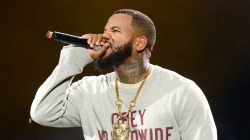
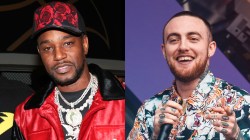
![Method Man Admits He Didn't Like Drake's "Wu-Tang Forever": "I [Wasn't] Getting On That"](https://hiphopdx.com/wp-content/uploads/2025/12/method-man-drake-wu-tang-forever-remix.jpg?w=250)
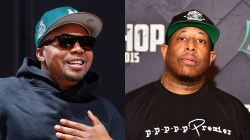

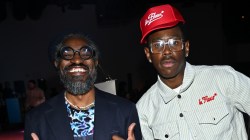

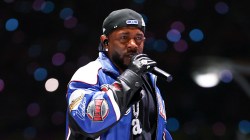
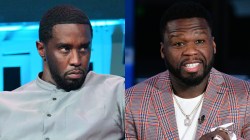
Sway saying he spent 100k to 200k. IS IT 100K OR IS IT 200K? HOW WOULD YALL LOOK AT KANYE IF HE SAID HE SPENT 13 TO 26 MILL!!!
STFU. Dumbass.
Insert Kanye West rant trap remix here.